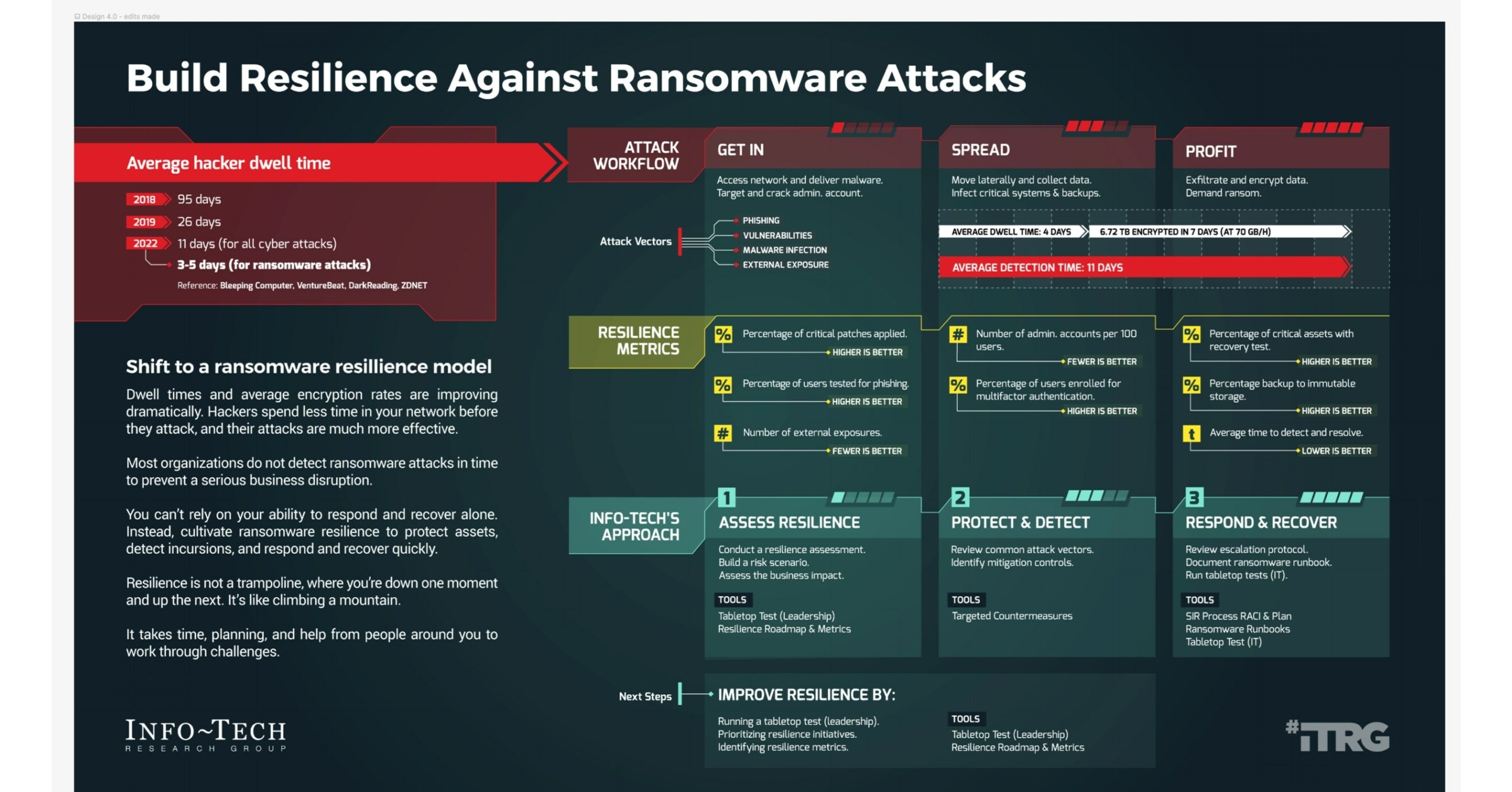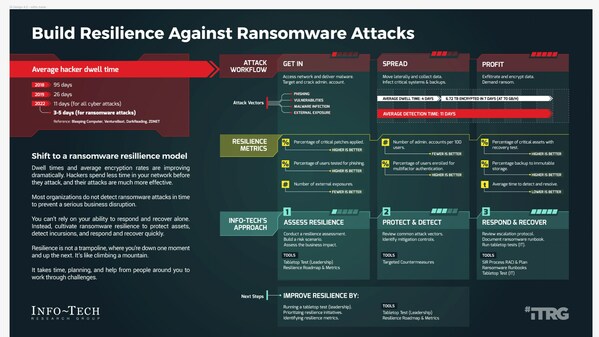Organizations Likely to Experience Ransomware Threat in the Next 24 Months, According to Info-Tech Research Group
Security leaders must build resiliency against these complex attacks immediately.
TORONTO, Jan. 23, 2023 /PRNewswire/ – Cyberattacks, especially ransomware, are becoming more sophisticated more frequent, with more severe impacts, year over year. These attacks can quickly encrypt systems and steal sensitive data, making data recovery challenging for organizations. Although there is much concern about the ransomware threat, corporate executives are not yet willing to spend on solutions without clear evidence of the improvements being made. To help IT leaders improve their organization’s ability to prevent incursions and defend against ransomware attacks in the current climate, global IT research and advisory firm Info-Tech Research Group has published a new research-backed industry blueprint, titled Build Resilience Against Ransomware Attacks.
Ransomware is a high-profile threat that demands immediate attention, as it is a much more complex security threat than other types of attacks. Malicious actors have also developed increasingly sophisticated methods to pressure organizations into paying ransom payments. These emerging strains can exfiltrate, encrypt, and destroy data and backups in hours, making data recovery a grueling challenge.
“As ransomware attacks become more frequent and impactful, organizations need to focus on building resiliency to withstand these attacks instead of solely relying on response and recovery,” says Michel Hébert, research director at Info-Tech Research Group. “The process of building resilience is like climbing a mountain, requiring time, planning, and help from others to overcome challenges and work through problems.”
Info-Tech’s findings show that organizations often misunderstand the risk scenarios associated with ransomware attacks, which can lead to underestimating the potential impact of an attack. The cost of a ransomware attack goes beyond just the ransom, with four key areas driving recovery costs: detection and response,…





